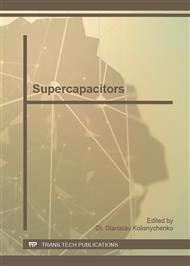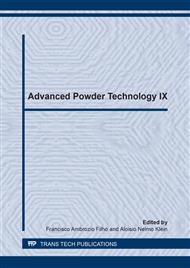p.404
p.409
p.415
p.421
p.427
p.433
p.440
p.446
p.452
Self-Discharge and Microstructure of Supercapacitors Tested at Room Temperature and at 333 K
Abstract:
The microstructure, chemical composition and self-discharge of some retail available supercapacitors have been investigated. Standard capacities of 1.0, 0.47 and 0.1 F at a maximum potential of 5.5 V were employed in this study. Self-discharge were carried out at room temperature and close to the nominal maximum working temperature of the supercapacitors (specified for 343 K). Internal resistance of the supercapacitors were calculated using the discharge curve for room temperature and 333 K. The microstructures of the electrode powder material have been investigated using scanning electron microscopy (SEM) and chemical microanalyses employing energy dispersive X-ray analysis (EDX). A compositional and morphological evaluation of these commercial supercapacitors materials has been carried out.
Info:
Periodical:
Pages:
427-432
Citation:
Online since:
December 2014
Price:
Сopyright:
© 2014 Trans Tech Publications Ltd. All Rights Reserved
Share:
Citation:



